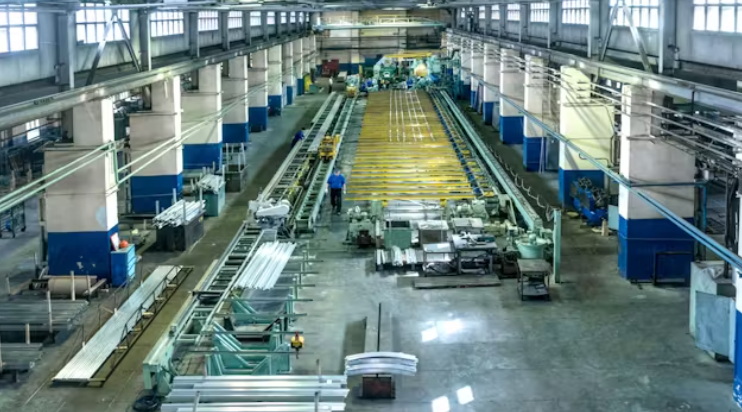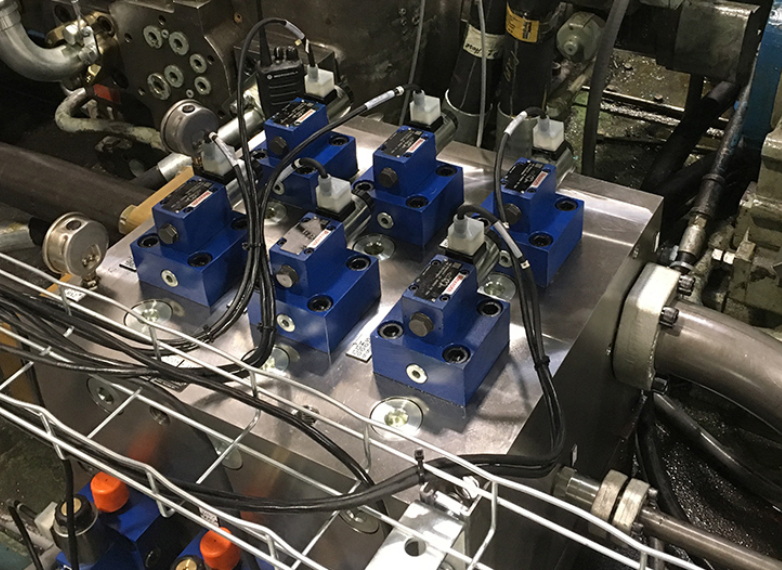Content Menu
● Understanding the Hydraulic System in Aluminum Extruders
● Common Hydraulic Failures in Aluminum Extruders
● Diagnosing Hydraulic Failures
● Repairing Hydraulic Failures
● Preventive Maintenance
● Case Studies
● Conclusion
● FAQ
>> 1. What are the most common causes of hydraulic fluid contamination?
>> 2. How often should hydraulic fluid be changed?
>> 3. What are the signs of a failing hydraulic pump?
>> 4. How can overheating be prevented in a hydraulic system?
>> 5. What should be included in a hydraulic system inspection checklist?
● Citations:
Hydraulic systems are the backbone of aluminum extrusion presses, providing the force and control necessary for shaping aluminum into various profiles[7]. However, these systems are complex and prone to failures that can lead to downtime, reduced productivity, and costly repairs[7]. Understanding how to diagnose and repair these failures is crucial for maintaining efficient operations. This article provides a detailed guide to identifying common hydraulic issues in aluminum extruders and implementing effective solutions, and emphasizes the importance of regular maintenance[1][7].

Understanding the Hydraulic System in Aluminum Extruders
Before diving into diagnostics and repairs, it's essential to understand the basic components and functions of a hydraulic system in an aluminum extruder. The key components include:
- Hydraulic Pump: The heart of the system, responsible for generating the flow of hydraulic fluid[4].
- Hydraulic Fluid Reservoir: Stores the hydraulic fluid, which acts as the power transmission medium[1].
- Hydraulic Cylinders: Convert hydraulic pressure into mechanical force to drive the extrusion process[1].
- Control Valves: Regulate the direction, pressure, and flow of hydraulic fluid[2].
- Piping and Hoses: Transport hydraulic fluid between components[1].
- Filters: Remove contaminants from the hydraulic fluid to prevent damage to components[1].
- Seals: Prevent leakage of hydraulic fluid[1].
The hydraulic system works by the pump drawing fluid from the reservoir and delivering it under pressure to the cylinders. Control valves direct the fluid to control the movement and force of the cylinders, which in turn, drives the extrusion process.
Common Hydraulic Failures in Aluminum Extruders
Hydraulic failures can manifest in various ways, each with distinct causes and symptoms. Here are some common issues:
Fluid Leaks:
- Causes: Worn or damaged seals, loose fittings, corroded pipes, or damaged hoses[1].
- Symptoms: Visible fluid puddles, decreased system pressure, increased fluid consumption, and potential environmental hazards[1].
Pressure Loss:
- Causes: Pump wear, internal leaks in cylinders or valves, incorrect pressure settings, or a clogged filter[1][2][4].
- Symptoms: Reduced extrusion force, slower cycle times, and inability to maintain consistent pressure[2].
Overheating:
- Causes: Insufficient cooling, contaminated fluid, excessive cycling, or a faulty pump[1][3].
- Symptoms: High fluid temperature, decreased fluid viscosity, component damage, and potential system shutdown[3].
Contamination:
- Causes: Ingress of dirt, water, or other foreign materials into the hydraulic fluid[1][7].
- Symptoms: Accelerated wear of components, valve malfunction, reduced pump efficiency, and increased fluid viscosity[7].
Valve Malfunctions:
- Causes: Spool sticking, solenoid failure, wear, or contamination[1].
- Symptoms: Erratic cylinder movement, pressure fluctuations, and failure to maintain position[1][2].
Pump Failures:
- Causes: Wear, cavitation, contamination, or inadequate lubrication[4][7].
- Symptoms: Reduced flow, low pressure, excessive noise, and overheating[4].
Cylinder Issues:
- Causes: Seal failure, rod damage, or internal leakage[1].
- Symptoms: Slow or erratic movement, reduced force, and fluid leakage[1].
Pipe Leakage:
- Causes: The welding position of the pipe and the flange is most likely to cause pipe leakage, loosening of the screw and pipe joints caused by long-term operation, and aging flange mounting surface seal[1].
- Symptoms: Oil cylinder leakage is relatively high[1].
Diagnosing Hydraulic Failures
Effective diagnosis is critical for addressing hydraulic failures promptly and accurately. A systematic approach involves the following steps:
1. Visual Inspection:
- Check for visible leaks, damaged components, and signs of wear[1].
- Examine the condition of hoses, pipes, and fittings[1].
- Inspect the hydraulic fluid for color, odor, and clarity, which can indicate contamination or degradation[1].
2. Pressure Testing:
- Use pressure gauges to measure system pressure at various points[1].
- Compare readings to the manufacturer's specifications to identify pressure drops or inconsistencies[1].
- Check the pressure relief valve to ensure it is functioning correctly[4].
3. Flow Testing:
- Use a flow meter to measure the flow rate of hydraulic fluid[1].
- Compare readings to the manufacturer's specifications to identify pump wear or restrictions in the system[1].
4. Temperature Monitoring:
- Use a thermometer or thermal imaging camera to monitor the temperature of hydraulic components[3][11].
- Identify hotspots that may indicate overheating or friction[3].
5. Fluid Analysis:
- Collect a sample of hydraulic fluid and send it to a laboratory for analysis[1].
- Tests can reveal the presence of contaminants, fluid degradation, and wear particles[1].
- Regular fluid analysis can help predict potential failures before they occur[1].
6. Component Inspection:
- Disassemble and inspect individual components such as valves, cylinders, and pumps[1].
- Look for signs of wear, damage, or contamination[1].
- Use precision measuring tools to check for dimensional deviations[1].
7. Using Simulation Software:
- COMSOL Multiphysics offers modeling examples to investigate properties and potential issues within hydraulic systems[3].
- This software can be used to analyze fluid flow, heat transfer, and structural mechanics to predict and diagnose failures[3].
8. Vibration and Magnetic Field Detection:
- These methods can help diagnose issues such as spool movement problems, valve core clamping, and magnetic flux leakage in electromagnetic coils[1].

Repairing Hydraulic Failures
Once the cause of the hydraulic failure has been identified, the appropriate repair measures can be taken. Common repairs include:
1. Seal Replacement:
- Replace worn or damaged seals in cylinders, valves, and fittings to prevent leaks[1].
- Use high-quality seals that are compatible with the hydraulic fluid[1].
2. Hose and Pipe Repair/Replacement:
- Repair or replace damaged hoses and pipes to eliminate leaks and maintain system pressure[1].
- Ensure that replacement hoses and pipes are rated for the correct pressure and temperature[1].
3. Valve Repair/Replacement:
- Clean and inspect valves for wear or damage[1].
- Replace valve components such as spools, springs, and solenoids as needed[1].
- Consider upgrading to newer, more efficient valves[2].
4. Pump Repair/Replacement:
- Inspect the pump for wear, cavitation, and contamination[4].
- Replace worn or damaged pump components[4].
- If the pump is severely damaged, replace it with a new one[4].
5. Cylinder Repair:
- Disassemble the cylinder and inspect the barrel, rod, and seals[1].
- Replace worn or damaged components[1].
- Hone the cylinder barrel to remove scratches and ensure a smooth surface[1].
6. Fluid Replacement:
- Drain the old hydraulic fluid and flush the system to remove contaminants[1].
- Replace the fluid with new, high-quality hydraulic fluid that meets the manufacturer's specifications[1].
7. Filter Replacement:
- Replace hydraulic filters regularly to maintain fluid cleanliness[1].
- Use filters with the correct micron rating for the system[1].
8. Realignment:
- Ensure that all components are correctly aligned to prevent uneven wear and stress[5].
- Misalignment can lead to premature failure of seals and other parts[5].
9. Pressure Resetting:
- If the seal is broken and oil leakage occurs due to back pressure and the pressure setting being too high, reset the hydraulic system pressure and test the hydraulic control valve components[1].
Preventive Maintenance
Preventive maintenance is essential for minimizing hydraulic failures and extending the life of the system. Key preventive measures include:
- Regular Inspections: Conduct regular visual inspections to identify potential problems early[7].
- Fluid Analysis: Perform regular fluid analysis to monitor fluid condition and identify contaminants[1].
- Filter Changes: Replace hydraulic filters according to the manufacturer's recommendations[1].
- Seal Replacement: Replace seals proactively before they fail[1].
- Component Lubrication: Ensure that all moving parts are properly lubricated[4].
- Temperature Monitoring: Monitor system temperature to prevent overheating[3].
- Training: Provide training to operators and maintenance personnel on proper hydraulic system operation and maintenance[7].
- Adherence to Standards: Follow SAE International standards for maintaining safety, dependability, and efficiency[6].
Case Studies
To illustrate the importance of proper diagnosis and repair, consider the following case studies:
Case Study 1: Leak Detection and Repair
- Problem: An aluminum extruder experienced a significant drop in pressure, leading to reduced extrusion speed and inconsistent product quality.
- Diagnosis: Visual inspection revealed hydraulic fluid leaks at several cylinder seals. Fluid analysis confirmed contamination.
- Solution: The cylinder seals were replaced, the hydraulic fluid was changed, and new filters were installed. The system pressure was restored, and the extrusion process returned to normal.
Case Study 2: Overheating Issues
- Problem: An aluminum extruder frequently overheated, causing system shutdowns and delays.
- Diagnosis: Temperature monitoring identified a faulty cooling fan and a clogged heat exchanger.
- Solution: The cooling fan was replaced, and the heat exchanger was cleaned. The system temperature stabilized, and the extruder operated without further shutdowns.
Case Study 3: Valve Malfunction
- Problem: An aluminum extruder experienced erratic cylinder movement, resulting in inconsistent extrusion profiles.
- Diagnosis: Component inspection revealed a sticking spool in a control valve.
- Solution: The valve was disassembled, cleaned, and the spool was replaced. The cylinder movement became smooth and consistent, and the extrusion profiles met the required specifications.
Conclusion
Diagnosing and repairing hydraulic failures in aluminum extruders requires a systematic approach, a thorough understanding of the system, and adherence to best practices. By implementing regular inspections, fluid analysis, and preventive maintenance, operators can minimize downtime, reduce repair costs, and ensure the efficient and reliable operation of their extrusion presses[7]. Investing in training and staying informed about the latest diagnostic and repair techniques will further enhance the ability to address hydraulic failures effectively[7][9].

FAQ
1. What are the most common causes of hydraulic fluid contamination?
The most common causes of hydraulic fluid contamination include the ingress of dirt, water, and other foreign materials into the system. This can occur through leaky seals, improper filling procedures, or contaminated storage containers[1][7].
2. How often should hydraulic fluid be changed?
Hydraulic fluid should be changed according to the manufacturer's recommendations, typically every 1,000 to 2,000 hours of operation. However, the actual interval may vary depending on the operating conditions and the results of fluid analysis[1].
3. What are the signs of a failing hydraulic pump?
Signs of a failing hydraulic pump include reduced flow, low pressure, excessive noise, and overheating. A failing pump may also cause the system to operate erratically or fail completely[4].
4. How can overheating be prevented in a hydraulic system?
Overheating can be prevented by ensuring adequate cooling, using the correct type of hydraulic fluid, maintaining proper fluid levels, and avoiding excessive cycling. Regular inspection and cleaning of heat exchangers and cooling fans are also essential[3].
5. What should be included in a hydraulic system inspection checklist?
A hydraulic system inspection checklist should include visual checks for leaks, damaged components, and signs of wear. It should also include pressure and flow testing, temperature monitoring, and fluid analysis. The checklist should be customized to the specific requirements of the system[1].
Citations:
[1] https://ikin-fluid.com/how-to-maintain-and-manage-extrusion-press-hydraulic-system/
[2] https://www.powermotiontech.com/hydraulics/hydraulic-valves/article/21263257/bosch-rexroth-extrusion-press-hydraulic-valve-controls-the-right-time-to-upgrade
[3] https://www.comsol.com/models
[4] https://www.otalum.com/common-faults-and-solutions-in-the-work-of-aluminum-extruder.html
[5] https://dunawayinc.com/9-essential-maintenance-tips-to-maximize-the-life-of-your-hydraulic-extrusion-press/
[6] https://www.sae.org/standards
[7] https://insights.made-in-china.com/Common-Failures-and-Preventive-Measures-of-Aluminum-Profile-Extrusion-Press-Machine_TAUaOMCJunHf.html
[8] https://members.aec.org/store/viewproduct.aspx?id=22238505
[9] https://www.asminternational.org
[10] https://aec.org/extrusion-equipment
[11] https://www.omega.com/en-us/






















